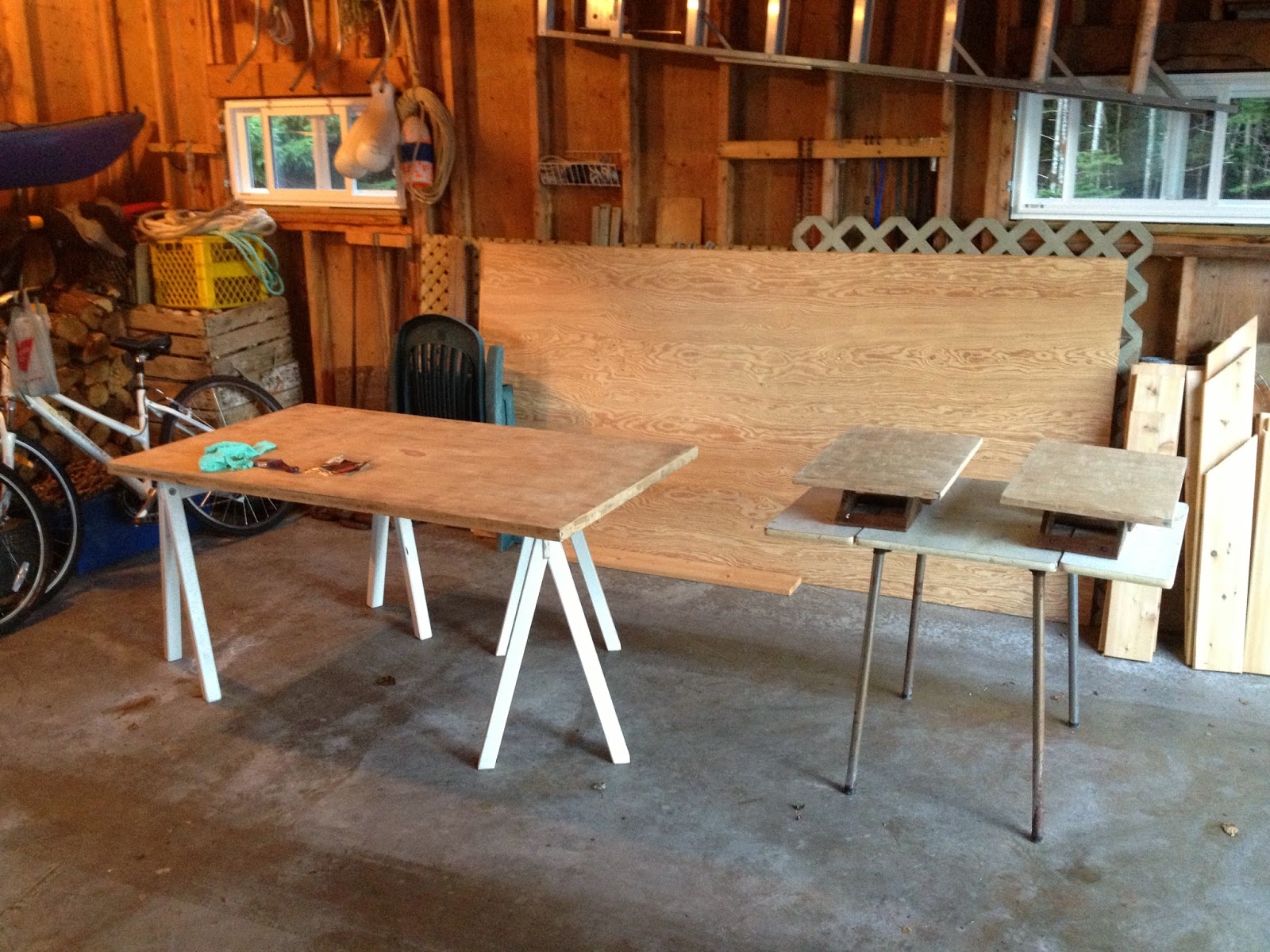Rolling into third year of mechanical engineering (2013) I needed a new desk. I had refurbished one before, it was a rescue from the Dunn building, a 1950's vintage with some clever elements to it so I wanted another like it. I found one on Kijiji that was free to anyone who would drag it off - my mother's poor little Suzuki SX4 just barely contained it.
Once home, it was time for a tear down and sand of all the panels, which required yet another invasion of my parent's garage.
The parts on right are the pair of pull-out work surfaces, one of the features I really enjoyed. The oak veneer on the desk top didn't sand as evenly as I had hoped so I had to go to a black stain to cover up those 'little sins'.
A previous owner had cut off the legs, likely to have it fit through a door frame, but had simply reattached them using a single metal bracket on each leg. I upgraded the assembly using hanger bolts and thread inserts. I also added threaded glides to each of the legs.
Stain and primer.
Finished product, including my original driftwood monitor stand. I lucked out for hardware as my mom had unused handles she had picked it up at a Rona close-out sale that she contributed to the cause.
Expandable work surface in action.
Once home, it was time for a tear down and sand of all the panels, which required yet another invasion of my parent's garage.
The parts on right are the pair of pull-out work surfaces, one of the features I really enjoyed. The oak veneer on the desk top didn't sand as evenly as I had hoped so I had to go to a black stain to cover up those 'little sins'.
A previous owner had cut off the legs, likely to have it fit through a door frame, but had simply reattached them using a single metal bracket on each leg. I upgraded the assembly using hanger bolts and thread inserts. I also added threaded glides to each of the legs.
Stain and primer.
Finished product, including my original driftwood monitor stand. I lucked out for hardware as my mom had unused handles she had picked it up at a Rona close-out sale that she contributed to the cause.
Expandable work surface in action.


























